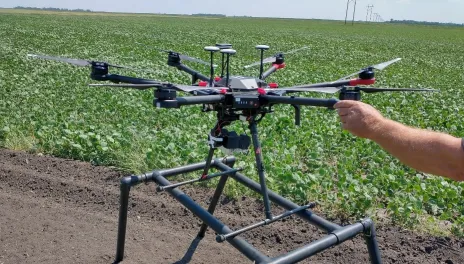Winterizing Your Drone: Things to do NOW in order to prevent headaches LATER
With the end of the field season in sight, it is time to start thinking about necessary steps to winterize your drone. Let’s face it, most of us are not going to get out flying in the middle of a North Dakota winter. Now is the time to run through routine maintenance, insure your flight logs are in order, and generally “gear down”. Doing all of this now will extend the useful life of your drone and minimize the possibility for incidents in the spring.
The first thing to do is simple: inspect the drone and batteries. Check the airframe and props for cracks. Check the batteries for bulges or other indications they made need to be retired. If you identify any problems, now is the time to fix them. There is nothing more frustrating than getting ready to go out, only to realize that you forgot to replace old batteries or a broken prop.
Once the visual inspection is complete, it’s time to clean the drone. An easy way to remove dirt and grime from around the gimbal or around the motors is with canned air, similar to that used to clean a keyboard. Pipe cleaners are also good for getting into tight places. For the airframe, use a microfiber cloth to clean off the dust. Now is also a good time to clean and lubricate the motors if your particular model requires it.
Next, and arguably the one thing that I often forget, is to check for any firmware updates. Check for both the drone itself as well as the controller. Even if there are new updates available when you unpack it later, the updating process will go faster if you aren’t several versions behind. After the firmware updates are complete, remove and discharge the batteries. LiPO batteries should be stored separately and in a fire-proof container when possible.
Lastly, store your drone in a climate-controlled setting. Don’t leave it out in the garage to freeze, or put it in the basement next to the woodstove. It is recommended that batteries are stored at a temperature between 68-77oF. Extreme heat or extreme cold can result in permanent damage to batteries, as well as damage to the electrical elements of the controller and drone. Oftentimes, this damage doesn’t become noticeable until something occurs in the field.
Have fun, be safe, and make sure to routinely clean and maintain your drone.
David Kramar, Ph. D.
David.Kramar@ndsu.edu
Precision Agriculture Specialist
